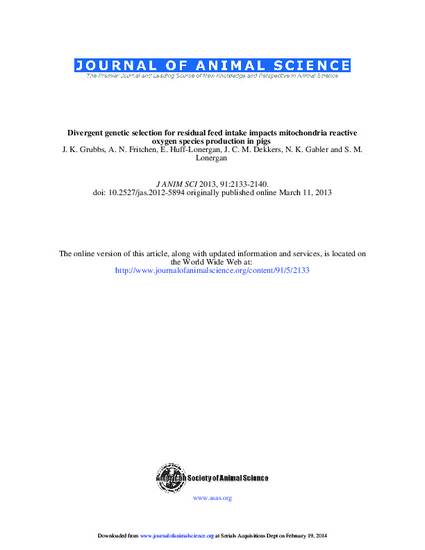
The objective of this study was to determine the extent to which genetic selection for residual feed intake (RFI) impacts electron leakage and reactive oxygen species (ROS) production in mitochondria from muscle and liver tissue. Understanding how genetic selection for RFI impacts animal physiology and growth efficiency is of the utmost importance as the world population increases. Production efficiency is tied directly to energy use. Mitochondria were used in this study because they produce 90% of the ATP in the body and use a large majority of dietary energy. Mitochondria were isolated from both muscle and liver tissue from pigs genetically selected for RFI (n = 8 per RFI line; 34 ± 4 kg). A 2,7-dichlorofluorscein diacetate assay was used to detect differences in hydrogen peroxide production between the more efficient low RFI line and the less efficient high RFI line. Our hypothesis was that greater efficiency would be linked to less ROS production from the mitochondria. There was less ROS production in mitochondria from the white portion of the semitendinosus in the low RFI line compared with the high RFI line, when both NADH and Flavin Adenine Dinucleotide (FADH2) energy substrates were used (glutamate and succinate, respectively). Additionally, mitochondria from the red portion of the semitendinosus in the low RFI line had less ROS production when succinate was used as an energy substrate (P < 0.05). A positive correlation was observed between RFI and ROS in mitochondria from the LM. These data indicate genetic selection for RFI may influence mitochondrial ROS production and efficiency of pork production.
Available at: http://works.bepress.com/elisabeth_huff-lonergan/55/

This article is from Journal of Animal Science 91 (2013): 2133–2140, doi:10.2527/jas.2012-5894.